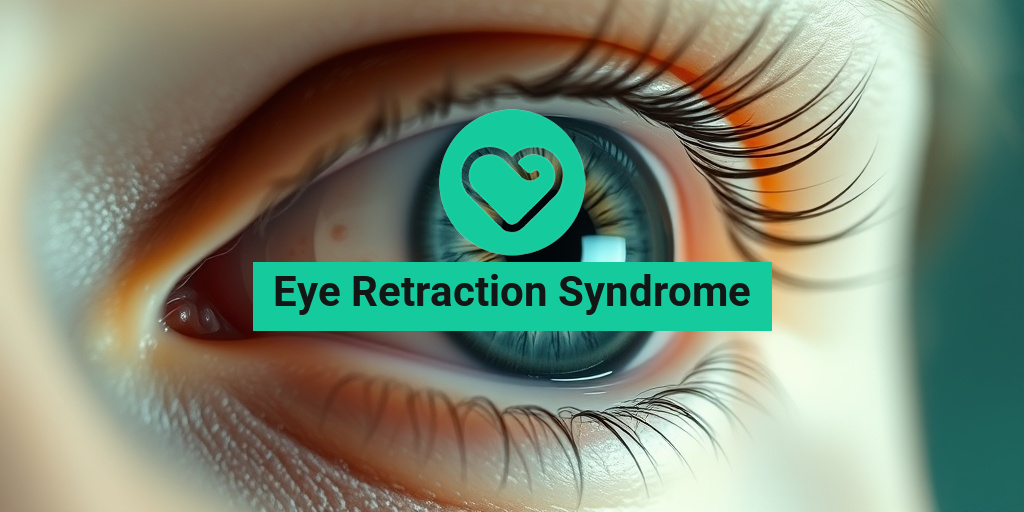What Is Eye Retraction Syndrome?
Eye Retraction Syndrome, often referred to as eyelid retraction syndrome, is a condition characterized by the abnormal positioning of the eyelids. In this syndrome, the eyelids are pulled back or retracted, which can lead to a variety of visual and aesthetic concerns. This condition can affect one or both eyes and may be associated with other underlying health issues.
The most common form of eyelid retraction is known as Parinaud’s syndrome, which is often linked to neurological conditions. However, eye retraction can also occur due to other factors such as trauma, thyroid disease, or even certain medications. Understanding the causes and implications of this syndrome is crucial for effective management and treatment.
Causes of Eye Retraction Syndrome
There are several potential causes of eye retraction syndrome, including:
- Thyroid Disorders: Conditions like Graves’ disease can lead to swelling behind the eyes, causing the eyelids to retract.
- Neurological Issues: Damage to the nerves controlling eyelid movement can result in retraction.
- Trauma: Injuries to the eye or surrounding areas may lead to changes in eyelid position.
- Medications: Certain drugs can affect muscle tone and eyelid positioning.
Identifying the underlying cause is essential for determining the appropriate treatment plan. If you suspect you have eye retraction syndrome, consulting with a healthcare professional is vital.
Eye Retraction Symptoms
Recognizing the symptoms of eye retraction syndrome is crucial for early diagnosis and intervention. The symptoms can vary depending on the severity of the condition and its underlying causes. Here are some common symptoms to look out for:
Common Symptoms
- Visible Eyelid Retraction: The most noticeable symptom is the abnormal positioning of the eyelids, which may appear higher than normal.
- Increased Exposure of the Eye: With the eyelids retracted, more of the eye surface is exposed, which can lead to dryness and irritation.
- Difficulty Closing the Eyes: Some individuals may find it challenging to fully close their eyes, especially during sleep.
- Eye Discomfort: This can include sensations of dryness, burning, or a gritty feeling in the eyes.
- Changes in Vision: In some cases, individuals may experience blurred vision or other visual disturbances.
When to Seek Medical Attention
If you notice any of these symptoms, it is important to seek medical advice promptly. Early intervention can help prevent complications and improve quality of life. A healthcare provider can perform a thorough examination and recommend appropriate treatments based on the underlying cause of the syndrome.
For those looking for more information on eye health and related conditions, Yesil Health AI (yesilhealth.com) offers a wealth of evidence-based resources that can help you understand your symptoms and treatment options better.
Conclusion
Eye Retraction Syndrome can significantly impact an individual’s quality of life, both visually and physically. Understanding the condition, its symptoms, and potential causes is the first step towards effective management. If you or someone you know is experiencing symptoms of eyelid retraction, don’t hesitate to reach out to a healthcare professional for guidance. Remember, early diagnosis and treatment can make a world of difference! 🌟
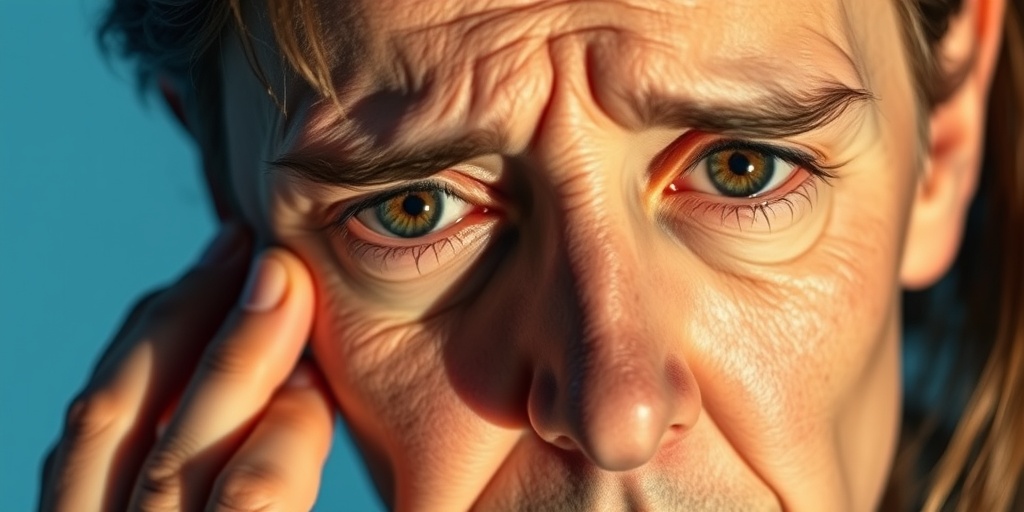
Causes of Eye Retraction Syndrome
Eye Retraction Syndrome, often characterized by an abnormal positioning of the eyelids, can be a perplexing condition for many. Understanding the underlying causes is crucial for effective management and treatment. Here are some of the primary causes:
Neurological Conditions
One of the most significant causes of eye retraction syndrome is neurological disorders. Conditions such as Parinaud’s syndrome, which affects the brain’s ability to control eye movements, can lead to eyelid retraction. This syndrome is often associated with tumors or lesions in the brain that impact the midbrain region.
Thyroid Disorders
Another common cause is related to thyroid dysfunction, particularly Graves’ disease. This autoimmune disorder can lead to hyperthyroidism, resulting in symptoms such as bulging eyes and eyelid retraction. The inflammation and swelling of the eye muscles can cause the eyelids to retract, making the eyes appear more prominent.
Trauma or Injury
Physical trauma to the eye area can also result in eyelid retraction. Injuries that affect the muscles or nerves controlling eyelid movement can lead to a condition where the eyelids do not close properly, resulting in retraction. This can occur due to accidents, surgeries, or even severe infections.
Congenital Factors
Some individuals may be born with anatomical variations that predispose them to eyelid retraction syndrome. Congenital conditions affecting the eyelid structure or the surrounding muscles can lead to retraction from an early age. These variations may require surgical intervention for correction.
Medications and Treatments
Certain medications, particularly those that affect muscle tone or neurological function, can also contribute to eyelid retraction. For instance, some antidepressants and antipsychotics may have side effects that impact eyelid movement. It’s essential to consult with a healthcare provider if you suspect your medication is causing this issue.
Risk Factors for Eye Retraction
Identifying the risk factors associated with eye retraction syndrome can help in early detection and management. Here are some key risk factors to consider:
Age
Age can play a significant role in the development of eyelid retraction. Older adults may experience changes in muscle tone and skin elasticity, making them more susceptible to conditions that lead to retraction. Additionally, age-related diseases, such as thyroid disorders, become more prevalent with time.
Family History
A family history of eye conditions or thyroid disorders can increase the likelihood of developing eyelid retraction syndrome. Genetic predispositions can influence the risk of conditions like Graves’ disease, which is a known contributor to eyelid retraction.
Existing Health Conditions
Individuals with pre-existing health conditions, particularly autoimmune diseases, are at a higher risk. Conditions such as lupus or rheumatoid arthritis can affect the eyes and surrounding tissues, leading to retraction. Regular eye examinations are crucial for those with such health issues.
Environmental Factors
Exposure to certain environmental factors, such as toxins or allergens, may also contribute to the development of eyelid retraction. For instance, prolonged exposure to chemicals or irritants can lead to inflammation and changes in eyelid function.
Previous Eye Surgeries
Individuals who have undergone eye surgeries, such as cataract surgery or eyelid surgery, may be at risk for developing eyelid retraction syndrome. Surgical complications can affect the muscles and nerves controlling eyelid movement, leading to retraction.
Understanding the causes and risk factors associated with eye retraction syndrome is essential for effective management and treatment. If you or someone you know is experiencing symptoms, it is advisable to consult a healthcare professional for a comprehensive evaluation and appropriate care. 🩺👁️
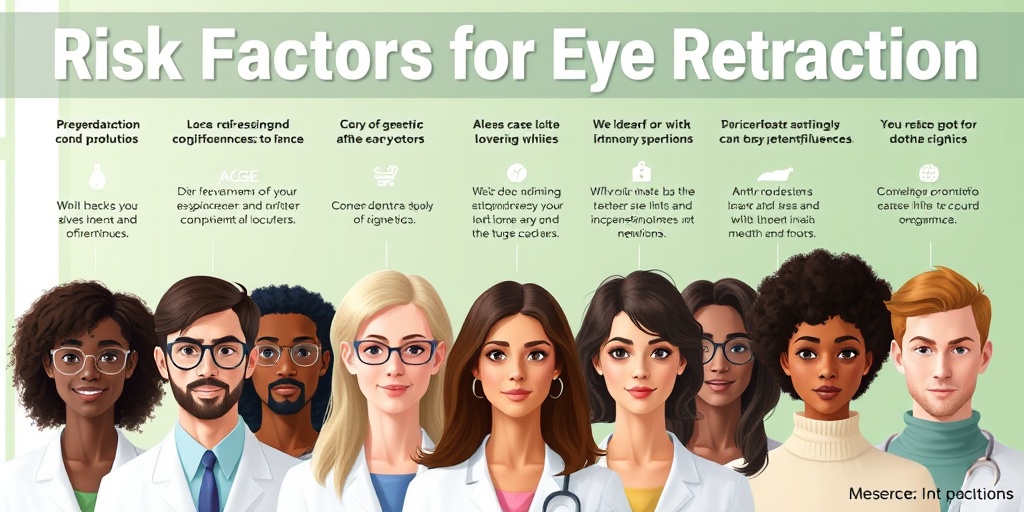
Diagnosis of Eye Retraction Syndrome
Eye Retraction Syndrome, often characterized by an abnormal positioning of the eyelids, can be a perplexing condition for both patients and healthcare providers. Understanding how this syndrome is diagnosed is crucial for effective management and treatment.
Understanding the Symptoms
The first step in diagnosing Eye Retraction Syndrome is recognizing its symptoms. Common signs include:
- Elevated eyelids: The eyelids may appear higher than normal, exposing more of the eyeball.
- Increased exposure of the sclera: This can lead to dryness and irritation.
- Difficulty closing the eyes: Patients may experience discomfort, especially during sleep.
- Visual disturbances: Some individuals report changes in vision or discomfort in bright light.
Clinical Examination
A thorough clinical examination is essential for diagnosing eyelid retraction syndrome. An ophthalmologist will typically perform the following:
- Visual acuity tests: To assess how well the patient can see.
- Slit-lamp examination: This allows the doctor to examine the eyelids and the surface of the eye closely.
- Assessment of eyelid function: The doctor will evaluate how well the eyelids close and their position at rest.
Additional Diagnostic Tests
In some cases, further tests may be necessary to confirm the diagnosis. These can include:
- Imaging studies: MRI or CT scans may be used to rule out underlying conditions affecting the eye or surrounding structures.
- Blood tests: To check for autoimmune disorders that could contribute to eyelid retraction.
Once a diagnosis of eyelid retraction syndrome is confirmed, the next step is to explore treatment options tailored to the individual’s needs.
Treatment Options for Eye Retraction
Treating Eye Retraction Syndrome involves a multifaceted approach, depending on the underlying cause and severity of the condition. Here are some common treatment options:
Non-Surgical Treatments
For mild cases, non-surgical treatments may be effective:
- Lubricating eye drops: These can help alleviate dryness and irritation caused by increased exposure of the eye.
- Eye patches: Wearing an eye patch at night can help protect the eye and encourage proper eyelid closure during sleep.
- Botulinum toxin injections: In some cases, injections can temporarily reduce eyelid retraction by relaxing the muscles around the eye.
Surgical Options
For more severe cases or when non-surgical treatments are ineffective, surgical intervention may be necessary:
- Blepharoplasty: This procedure can help reposition the eyelids to a more natural position.
- Frontalis sling surgery: This technique involves attaching the eyelid to the forehead muscle to assist with eyelid closure.
Managing Underlying Conditions
If eyelid retraction syndrome is caused by an underlying condition, such as thyroid disease or neurological disorders, treating that condition is crucial. This may involve:
- Medication: To manage thyroid levels or other hormonal imbalances.
- Regular monitoring: Keeping track of any changes in symptoms or overall health.
Consultation with Specialists
It’s essential for patients to work closely with their healthcare providers, including ophthalmologists and possibly endocrinologists or neurologists, to develop a comprehensive treatment plan. Regular follow-ups can help ensure that the treatment remains effective and any adjustments can be made as needed.
In conclusion, while Eye Retraction Syndrome can be challenging, understanding the diagnosis and available treatment options can empower patients to seek the care they need. With the right approach, many individuals can find relief and improve their quality of life. 🌟
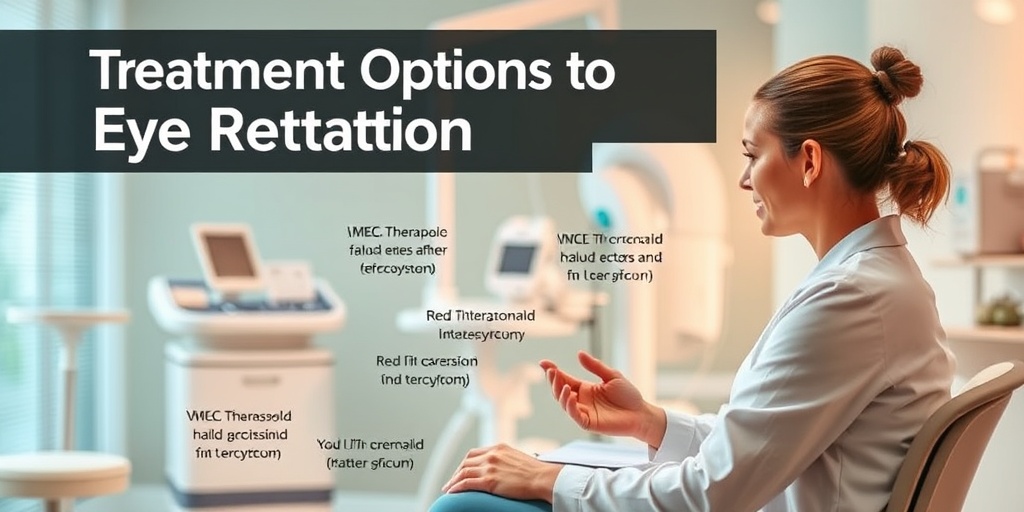
Home Remedies for Eye Retraction
Eye Retraction Syndrome can be a challenging condition, but there are several home remedies that may help alleviate symptoms and improve comfort. While these remedies are not a substitute for professional medical advice, they can be beneficial in managing the condition.
1. Warm Compresses
Applying a warm compress to the eyes can help soothe irritation and reduce discomfort associated with eyelid retraction. The warmth promotes blood circulation and can relax the muscles around the eyes. To use this remedy:
- Soak a clean cloth in warm water.
- Wring out excess water and place the cloth over your closed eyelids.
- Leave it on for about 10-15 minutes, repeating this process 2-3 times a day.
2. Eye Drops
Over-the-counter artificial tears can provide relief from dryness and irritation caused by eyelid retraction. These drops help to lubricate the eyes and can be used as needed throughout the day. Look for preservative-free options for the best results.
3. Proper Hydration
Staying hydrated is essential for overall eye health. Drinking plenty of water can help maintain moisture levels in your eyes, reducing the severity of symptoms. Aim for at least 8 glasses of water a day, and consider incorporating foods rich in omega-3 fatty acids, such as fish and flaxseeds, to support eye health.
4. Eye Exercises
Gentle eye exercises may help improve muscle control and reduce the effects of eyelid retraction. Here are a couple of simple exercises to try:
- Palming: Rub your hands together to generate warmth, then gently cup your palms over your closed eyes for a few minutes.
- Focus Shifting: Hold a pen at arm’s length and focus on it, then shift your gaze to an object further away. Repeat several times.
5. Avoiding Irritants
Minimizing exposure to irritants such as smoke, dust, and strong fragrances can help reduce symptoms. If you are sensitive to certain environments, consider using air purifiers and keeping windows closed during high pollen seasons.
Living with Eye Retraction Syndrome
Living with Eye Retraction Syndrome can be a unique challenge, but understanding the condition and adopting effective coping strategies can significantly improve your quality of life. Here are some tips for managing daily life with this syndrome.
Understanding Your Condition
Knowledge is power. Understanding what eyelid retraction syndrome entails can help you manage your symptoms more effectively. This condition often involves the abnormal positioning of the eyelids, which can lead to discomfort and visual disturbances. Familiarize yourself with the symptoms of eyelid retraction, such as:
- Increased exposure of the eyeball
- Dryness and irritation
- Difficulty closing the eyes completely
Seeking Professional Help
Regular check-ups with an eye care professional are crucial. They can provide tailored advice and treatment options, including potential surgical interventions if necessary. Don’t hesitate to discuss any changes in your symptoms or new concerns that arise.
Adapting Your Environment
Making adjustments in your living space can help you cope better with the symptoms of Eye Retraction Syndrome. Consider the following:
- Lighting: Use soft, diffused lighting to reduce glare and eye strain.
- Screen Time: Take regular breaks from screens to prevent dryness and fatigue.
- Humidity: Use a humidifier to maintain moisture in the air, especially in dry climates.
Emotional Support
Living with a chronic condition can take an emotional toll. Connecting with support groups or online communities can provide a sense of belonging and understanding. Sharing experiences and coping strategies with others facing similar challenges can be incredibly beneficial. 💬
Self-Care Practices
Incorporating self-care into your daily routine can help you manage stress and improve your overall well-being. Consider practices such as:
- Mindfulness and Meditation: These techniques can help reduce anxiety and promote relaxation.
- Regular Exercise: Physical activity can boost your mood and improve your overall health.
- Healthy Diet: Eating a balanced diet rich in vitamins and minerals supports eye health.
By implementing these strategies and remedies, you can take proactive steps toward managing Eye Retraction Syndrome and enhancing your quality of life. Remember, you are not alone in this journey! 🌟
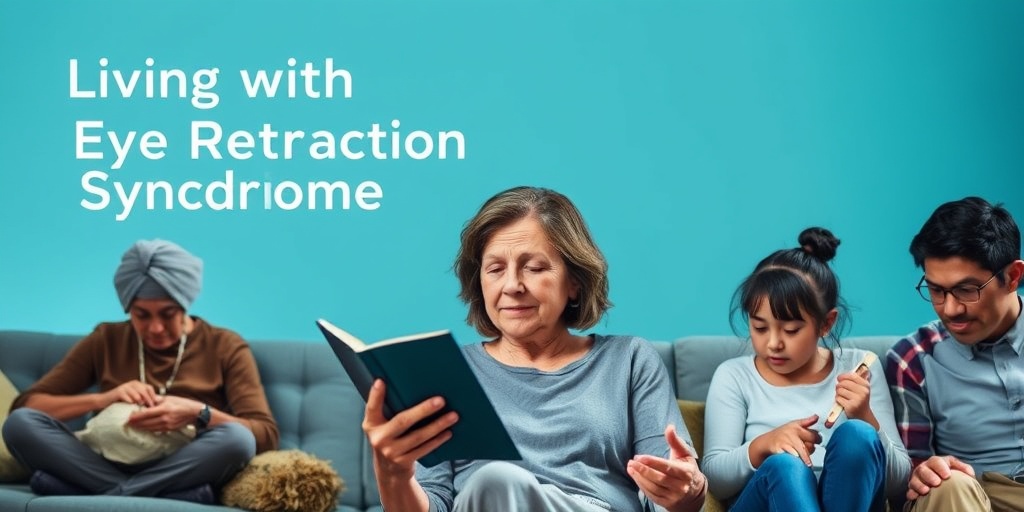
Frequently Asked Questions about Eye Retraction Syndrome
What is Eye Retraction Syndrome?
Eye Retraction Syndrome refers to a condition characterized by the abnormal positioning of the eyelids, where they appear to be retracted or pulled back. This can lead to exposure of the eyeball and may cause discomfort or vision issues.
What are the symptoms of Eyelid Retraction Syndrome?
Common eyelid retraction symptoms include:
- Increased visibility of the white part of the eye (sclera)
- Dryness or irritation of the eyes
- Difficulty closing the eyelids completely
- Changes in vision
What does eyelid retraction look like?
Eyelid retraction can be visually identified by the excessive exposure of the eyeball, which may give the eyes a wide-open appearance. This can sometimes be mistaken for other conditions, so it’s essential to consult a healthcare professional for an accurate diagnosis.
Can eyelid retraction go away on its own?
In some cases, eyelid retraction may resolve without treatment, especially if it is caused by temporary factors. However, persistent cases often require medical intervention to address the underlying cause.
How to fix eyelid retraction?
Treatment options for eyelid retraction may include:
- Medications to reduce inflammation
- Surgical procedures to reposition the eyelids
- Use of lubricating eye drops to alleviate dryness
Consulting with an ophthalmologist is crucial to determine the best course of action based on individual circumstances.
What is eyelid retraction Parinaud syndrome?
Eyelid retraction Parinaud syndrome is a specific type of eyelid retraction associated with certain neurological conditions. It often presents with additional symptoms such as vertical gaze palsy and may require specialized treatment.
Is eyelid retraction common?
Eyelid retraction can occur in various populations and may be associated with different medical conditions. Its prevalence can vary, so it’s essential to seek medical advice if you notice any changes in your eyelid position.
When should I see a doctor?
If you experience symptoms of eye retraction syndrome, such as persistent eyelid retraction, discomfort, or changes in vision, it is advisable to consult a healthcare professional for a thorough evaluation and appropriate management.

